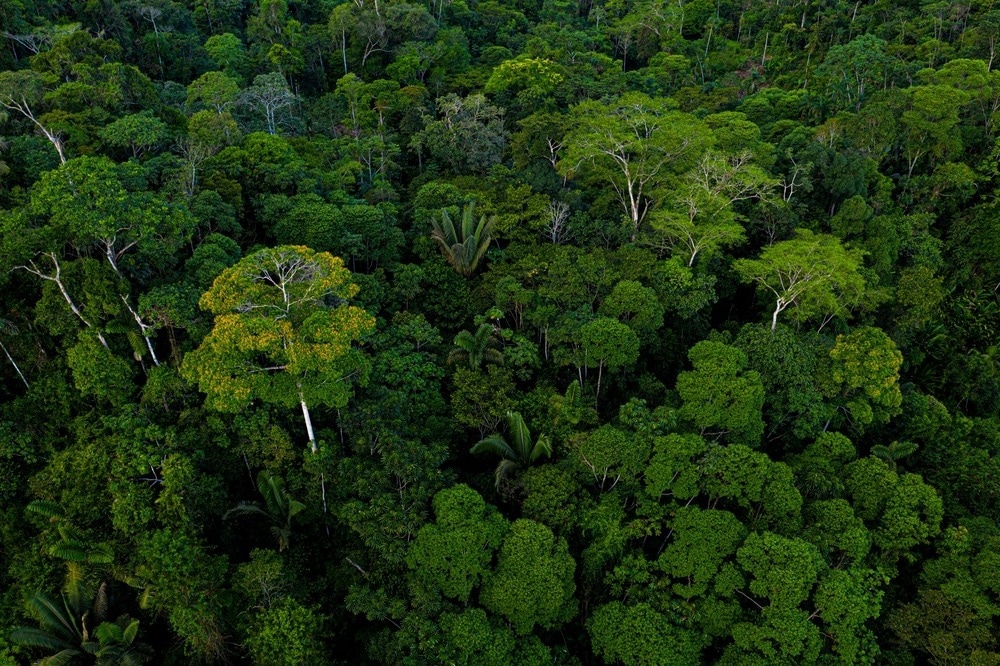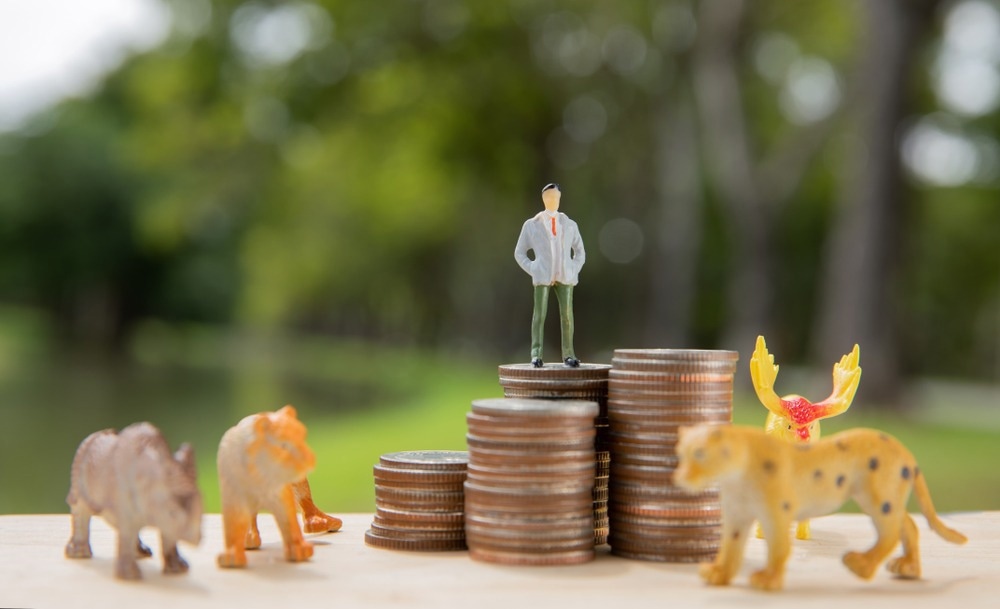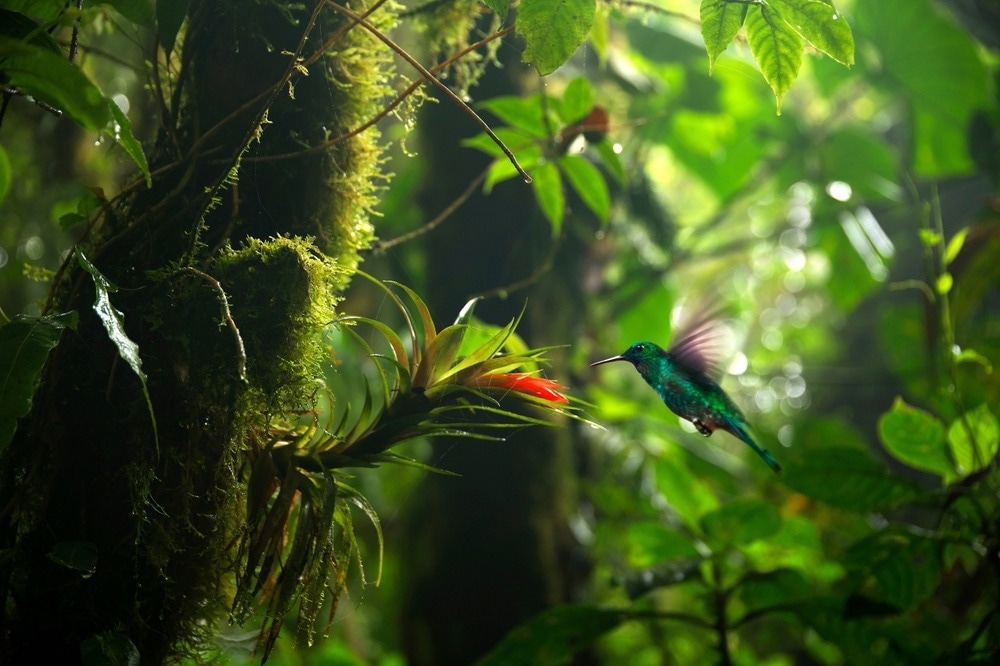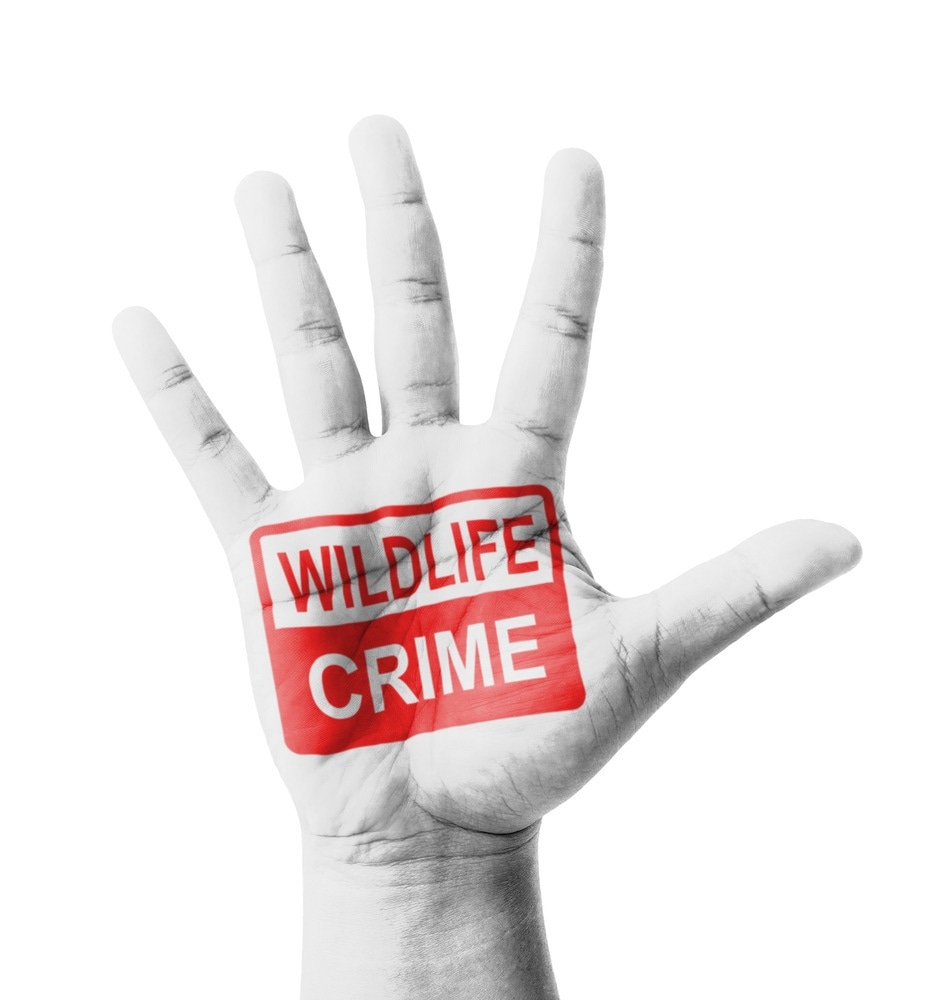In this interview, we talk to David Whitbourn, the person responsible for communications operations for the Convention on International Trade in Endangered Species (CITES), about regulating the wildlife trade to preserve the viability of species, the importance of international collaboration, and what the future looks like for Earth's wild flora and fauna.
Please could you introduce yourself and tell us about your role at CITES?
My name is David Whitbourn, and I run communications operations for CITES and am also the CITES spokesperson. CITES is the Convention on International Trade in Endangered Species. Its technical term is "Of wild fauna and flora," but you can also say animals and plants. It's an international convention that has been going on for 50 years with 183 countries, plus the European Union. It was set up in 1973 because, at that point, people were starting to recognize that trade and humans can lead to species extinction unless we are careful.
The whole intention behind CITES was to ensure the continued viability of each and every species. Over time, all of those countries have a chance to make their own assessments as to which ones of their animals and plant species are starting to be threatened and which ones they want to propose should be listed under CITES. There is a great big list of global species, and if the parties agree to put species onto these lists, international trade in these species is regulated. Fundamentally, it's a 50-year-old international treaty with nearly universal take-up from the world's countries. Countries have opted into it because they see the use. They recognize a need to control international trade, so it doesn't impact species conservation.
I work for the Secretariat, a group of about 35 or 40 people based out of Geneva. The Secretariat is able to advise countries on how the convention is supposed to work. The Secretariat advises on the little minutiae of what countries have to do to ensure that the intention and objectives of the convention are being upheld and that we are regulating the trade in these endangered species so that we perpetuate the species and ensure the continued viability of the species.
The aim of CITES is to ensure that international trade in specimens of wild animals and plants does not threaten the survival of the species. Please could you tell us how CITES is involved in this effort, and what some of your missions are?
On this big list of endangered species, any country can suggest any species they want if they feel there is a threat to it, and they would like to see its international trade regulated to conserve the species. This meeting that we have got coming up in less than a month is the World Wildlife Conference or the Meeting of the Conference of the Parties to CITES.
The World Wildlife Conference is coming up next month, and there are 52 proposals for different species of animals or plants that could or should be subject to either greater or lesser regulation. Any country can introduce any species. Once accepted, it goes onto either Appendix I or Appendix II. Appendix I is a small group that means banning the international trade in those species because it is felt that they are so much at risk; there is such an issue that the international trade could threaten the continued viability of the species. Appendix II, which is the majority, encompasses more than 90% of CITES-listed species and is where the trade is regulated through a system of permits. Countries put animal and plant species on there because they believe this regulation is necessary and recognize that if something is overtraded, then that could threaten the species and bring about the extinction of the species if we are not careful.
Appendix III is the only appendix where a country can unilaterally ask for a plant or animal species to be listed. Appendix III means that every time it is traded, it is recorded. Typically, Appendix III is when a country is not entirely clear of the level of trade there is and not entirely clear whether that level of trade is a threat to the species. Generally, if a species has been put forward for upgrading, it is because things are not good. Things are not going well, and there is a genuine threat to the viability of the species. If a species is downgraded, it is generally a more positive message that says, "Actually, the regulations seem to have worked well."

Image Credit: Panga Media/Shutterstock.com
CITES remains a global leader in international conservation, with 184 parties. What are the advantages of collaboration between multiple nations in achieving sustainable practice within the wildlife industry?
These global challenges require a global response, and this is one of the strengths of these multilateral environmental agreements that are in operation, of which CITES is one because we can work with our sister conventions and with other partners to try to contribute to these global problems that we're facing. That means there has also been an acknowledgment over time that the problems are interconnected as well – that it is not possible to tackle climate change while ignoring nature's role in mitigating climate change.
We cannot just pursue technical solutions to climate change or try to switch off our light bulbs, even though these are important things, without recognizing that the loss of huge swaths of land in nature is putting us at a huge disadvantage in our struggles to limit the temperature warming in our earth. And climate change again feeds into the loss of biodiversity.
The interconnected nature of the global crises that we are facing means that we are mandated to play a part in wider issues, and that is why these multilateral environmental agreements, where you can mobilize countries, where you can mobilize action across a broad area, is so vital. The multilateral environmental agreements allow you to look at what is working in one place and try and extend it to another. They enable you to take a coordinated approach to something so that when you cross a border, you do not suddenly switch from a program that is working very well to something that is the complete opposite of it and undoes all the good work that's being done there.
CITES Secretariat is a part of the United Nations Environment Program, and we work very closely with the United Nations Environment Program. We work very closely with the Food and Agriculture Organization. We work very closely with the UNDP, the development program because this is also a human problem. We depend hugely on nature for food, shelter, and medicines, as we've mentioned, and even for building materials. All of these things are vital to human well-being. As we see biodiversity being lost, we put our own future in jeopardy. There is a human dimension to this.
The international wildlife trade is estimated to be worth billions of dollars. How does the wildlife trade industry threaten the survival of certain species, and why is it challenging to regulate?
How do you estimate something that is illegal? There is no big firm of accountants keeping track of this. One range that is discussed is between eight and $22 billion. You can also break it down, and certain species on their own are responsible for a billion dollars worth of illegal trade. It is very hard to work it out, particularly in terms of monetary value. Data helps us understand the scale of the problem and therefore understand the scale of the needed response.
Conservation is very polarized. You have these extensive discussions that say, "Is nature conservation a national issue, a local issue, or an international issue?" If it is an international issue, and we are one of the factions that think it is, then surely you can say the funding of conservation should be an international issue. Some of the work done through CITES is looking at alternative ways of bringing money into conservation. How can you fund the people on the frontline to either incentivize them or help them survive and give them a livelihood in sustainable conservation activities?
When animals are confiscated, this is exceptionally complicated. A percentage are successfully reintroduced back into nature, but a large percentage are not. This is because you do not know precisely where that specimen came from; therefore, you cannot necessarily reintroduce it straight back to where it came from. Also, you do not know what diseases it is carrying, and therefore if you introduce it back into a population other than its own, it could pick up a disease which will then decimate that population by reintroducing it. If you put it into captivity, what kind of life will it have in captivity over that period?
Our vision by 2030 is that all trade in endangered species is legal, sustainable, and traceable. Legal is the obvious one – it cannot be a criminal activity; sustainable means that it does not have any detriment to the species and that trade is not impacting the viability of the species; and traceable means that you know where it came from, you know where it is going and a path all the way through. If we can combat illegal wildlife trade to the point where it brings it right down, that will have enormous impacts on biodiversity, but also on some of these other practices which are difficult to see.

Image Credit: Pentium5/Shutterstock.com
Why is it critical to safeguard wildlife resources for the future? What does it mean for ensuring a healthy global biodiversity?
There is a lovely quote around at the moment that we are either on the threshold of heaven or the threshold of hell. There are tipping points, and once you go beyond some of these, a disproportionately greater effort is needed to reverse the loss in biodiversity or the decline. Once we get past those points, we will start seeing a change in the world around us. If we wish to preserve human well-being, if we wish to sustain ourselves as a species, then we must tackle these crises. The loss of biodiversity puts us in a threatened position as a species.
It is why there is an urgency behind this work and why we like and see the importance of the multilateral approach to these issues. The scientific evidence is now overwhelming. There has been report after report involving an overwhelming number of reputable scientists globally showing that these are genuine threats to us and the species of animals and plants we are talking about.
Whether that is different dietary habits, whether it is different energy consumption habits, whether it is a different way of using nature than ways that we have been using it, that is stuff that has to be worked out. There are ways forward that are good ways forward for us as a species, and certainly for nature and the environment and biodiversity as a whole. We need to go down those paths and have a global recognition that we need to do it together.
Every year the world celebrates World Wildlife Day, and the theme for 2022 was “Recovering key species for ecosystem restoration.” What is meant by this message and why is it important to spread awareness surrounding it?
This year's theme about partnerships for conservation recognizes that the scale of the challenges we face, and the desire to have an impact that we have, will only be affected through partnerships. Individuals are important because partnerships and organizations are made up of individuals ultimately. But the ability to affect change comes not from working in isolation but through partnership. That is what we are going to highlight this coming year, and it works at all sorts of levels – whether it is a partnership between the school you are at and the school that is half a mile down the road or the community that you are a part of and another couple of communities nearby, or a partnership of governments, international organizations, etc. If it is a partnership that contributes positively to conservation, that is something to be celebrated as having an impact.
Often fauna are the first organisms to mind when considering endangered species, yet flora have just as vital a role in ecosystems. What more could be done by researchers and conservationists to improve public awareness and understanding of endangered flora species?
The majority of species that are listed under CITES are plant species rather than animal species. 52 proposals are going to the World Wildlife Conference this year, and some of those proposals end up covering more than 200 tree species. Animal species live in an environment of vegetation, plants, and trees; those ecosystems are vital to the conservation and preservation of animal species. If we're talking about importance and impact, then the habitats in which all of these species live, whether they are fauna or flora, if we lose those, we start to lose species. The areas that have been available for plant species and animal species to live in have declined dramatically over the last years.
Animal species are wholly dependent upon the environments in which they live. The environments in which they live, and without the plant species or tree species, the animal species will not endure.
More needs to be done to highlight this. Different people take messages in different ways. Some people need to know that it is a challenging time for all of us and that there is a potential threat. Other people are much more comfortable with more positive messages that highlight the good that can come through the conservation of species. The answer is probably a mixture of both, and I hope that some of these messages are starting to get a greater prominence and people are starting to have a better appreciation of the world we live in, the role it plays in sustaining us, and the role that we must play in sustaining it.

Image Credit: Teo Tarras/Shutterstock.com
According to figures from the International Union for Conservation of Nature’s Red List of Threatened Species, over 8,400 species of wild fauna and flora are critically endangered. How does the continued loss of species threaten not only wildlife but humanity as a whole?
Anything that starts to threaten nature will have a huge impact on our own well-being. Nature provides us with food, shelter, medicines, and leisure. We have to have an awareness of the totality of our species as well, and while you are reading this in relative comfort, then you may not be aware that there are people who are being affected by the loss of biodiversity and climate change that is going on right now.
People in small island nations are seeing sea levels rise. People who have livelihoods dependent upon nature are seeing those livelihoods being affected. Some people living subsistence farming are seeing that if their crops fail through drought or through other problems with the imbalance that there is now in nature, they are unable to feed their families. These impacts, if left unaddressed, are only going to become greater.
We also get to what we do as a species if we start to see significant parts of the world suffering from a lack of food? What do we do when we see parts of the world that are suffering through the impact of climate change but are not able to address it and cannot mitigate it themselves? Those problems left unaddressed will become global problems fairly quickly.
Citizen science has always been a strong player in conversation efforts. What can people do to get involved and help to spread awareness surrounding the importance of our global ecosystems and prevent international wildlife crime?
We are in an age when we desperately need citizen science because data allows us to know where our efforts should be directed and how much of our efforts should be directed in that area. Data is enormously difficult to collect. If more people are prepared to get involved with this, then at that point, we will have a rich data source that we can start to use that can give us the tools we need to try to combat some of the issues that we are facing. I see it only becoming more and more critical. I see more and more opportunities to be involved in citizen science projects, and I see there will only be coming a greater and greater demand from academia for people to help them out in the work that they are doing.

Image Credit: Jakkrit Orrasri/Shutterstock.com
What is next for CITES? Are you involved in any exciting upcoming projects?
We are excited that we have reached 50 years and are stronger than ever. We have got greater representation than we ever have. We believe we are in an excellent position to contribute to the global challenges we are discussing. We believe that we are also adaptable enough to change as the challenges come through.
We are looking, at the moment, for ways of funding conservation. Good words get us only so far, and action needs to be funded by money, and money needs to flow in greater amounts than before into conservation for us to have the impact that needs to be had. A discussion is also being brought to the World Wildlife Conference around CITES regulating biological modifications. As biology can change and manipulate genetic structures, there needs to be a regulatory approach. CITES is perfectly placed to do that regarding how these things are traded internationally. We are also looking at zoonotic diseases and the way diseases are transferred between animals, plants, and in some cases, in the wild and to human populations. We need to ensure that we are trying to do as much as possible to limit the transfer of potentially threatening diseases.
In broad terms, we are looking to the future and toward this vision of making international trade legal, sustainable, and traceable. As we do that, we contribute to reversing the biodiversity loss we have seen and building a better, safer, more sustainable future for us all.
About David Whitbourn
David works at the CITES Secretariat in Geneva. He acts as spokesperson for one of the world’s oldest and most successful multilateral environmental agreements and is enthusiastic about the contribution that CITES is making to nature and biodiversity.
He has worked in more than thirty countries and is convinced that the solutions to the environmental crisis lie within our grasp, but only effective cooperation and strong partnerships will bring them out.